Invented by Ryan Flaherty, Nike Inc
Adaptive fitness planning refers to the ability to adjust and modify workout routines based on individual progress and changing circumstances. This approach recognizes that each person has different strengths, weaknesses, and limitations, and therefore requires a personalized fitness plan. By using data-driven algorithms and advanced technologies, adaptive fitness planning platforms can analyze an individual’s performance, track progress, and make real-time adjustments to their workout routines. This ensures that the fitness plan is constantly evolving and optimizing to meet the individual’s changing needs.
Predictability, on the other hand, refers to the ability to anticipate and plan for future progress. In the context of fitness planning, predictability involves setting realistic goals and providing a roadmap for achieving them. This can be achieved through the use of data analytics and trend analysis, which can identify patterns and predict future outcomes. By incorporating predictability into fitness planning, individuals can have a clear understanding of what to expect and can stay motivated throughout their fitness journey.
The market for adaptive and predictable fitness planning has been driven by several factors. Firstly, the increasing availability of fitness tracking devices and apps has made it easier for individuals to monitor their progress and collect data. This data can then be used to create personalized fitness plans that adapt to the individual’s needs. Secondly, the growing awareness of the importance of individualized fitness has led to a demand for customized solutions. People are no longer satisfied with generic workout plans; they want something that is tailored to their specific goals and preferences. Lastly, the advancements in technology, such as artificial intelligence and machine learning, have made it possible to analyze vast amounts of data and provide accurate predictions and recommendations.
The benefits of adaptive and predictable fitness planning are numerous. Firstly, it allows individuals to make the most of their workout sessions by focusing on areas that need improvement and avoiding exercises that may lead to injury or overtraining. Secondly, it provides a sense of control and empowerment, as individuals can see their progress and have a clear roadmap for achieving their goals. This can greatly enhance motivation and adherence to the fitness plan. Lastly, adaptive and predictable fitness planning can save time and effort by eliminating trial and error and providing efficient and effective workout routines.
In conclusion, the market for personal fitness planning that is adaptive and predictable is experiencing significant growth. The combination of customization and consistency offered by adaptive fitness planning allows individuals to have personalized workout routines that adapt to their changing needs. Predictability, on the other hand, provides a clear roadmap for achieving goals and keeps individuals motivated throughout their fitness journey. With the increasing availability of fitness tracking devices and advancements in technology, the market for adaptive and predictable fitness planning is expected to continue to expand in the coming years.
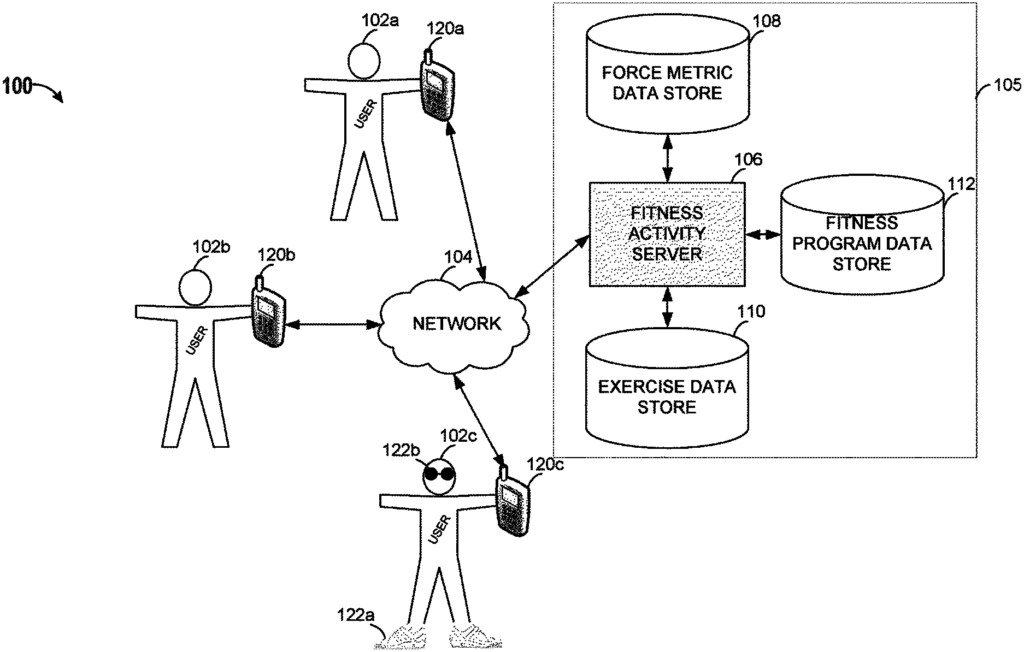
The Nike Inc invention works as follows
The disclosure includes systems, methods, computer programs, and devices for creating personalized fitness programs. A method is disclosed that includes releasing a protein into the body and measuring the force the body generates. The force is measured in relation to the parameter of the human body. It also involves identifying the target force metric by analyzing at least one target metric identified by the user.
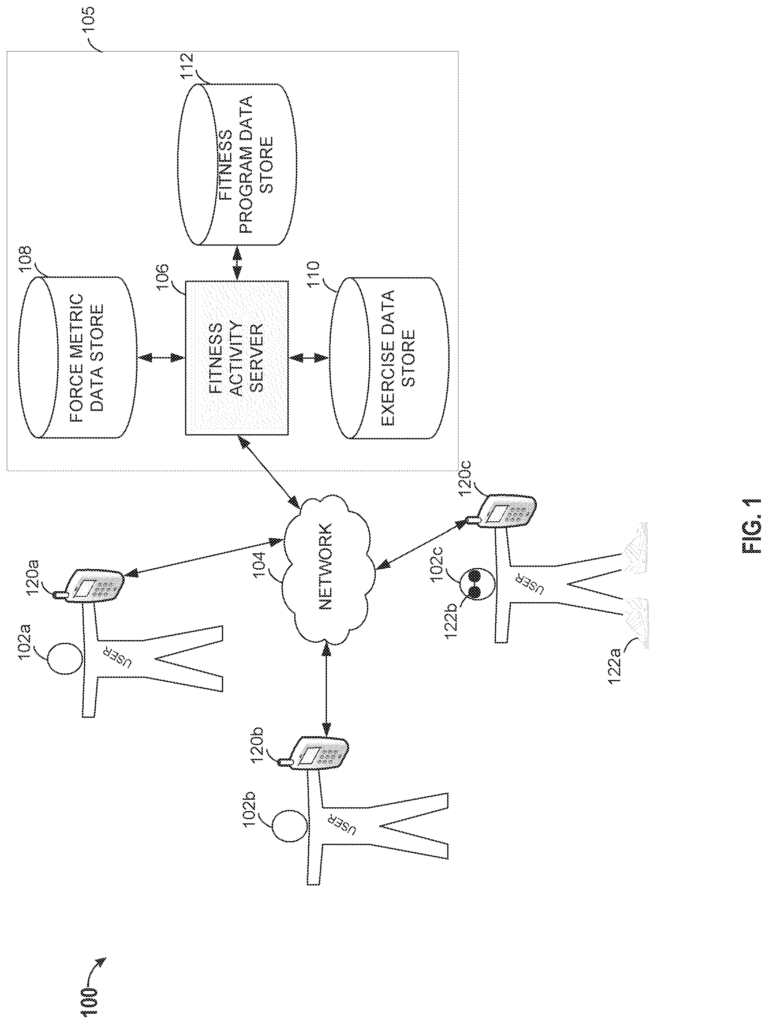
Background for Personal fitness planning that is adaptive and predictable
The present application is a generalized reference to personal fitness programs, exercise regimens and systems, devices and methods that are used to develop, implement and track such programs.
Personalized fitness programs are complex and may involve many aspects of a person’s life. Other fitness programs provide workout regimens, physical training or fitness programs based on a predetermined schedule based on the results of an average sample of users. Fitness programs that focus on individual abilities, workout regimens, or physical training can be used to determine a user?s current capabilities, and then generate fitness programs to improve those capabilities. Users may find it difficult to improve their physical abilities when using existing health programs because they are unable predict the results accurately or obtain the results efficiently after using the program. Health programs that integrate sensors to measure and identify the physical abilities of users, along with a training program capable of accurately predicting their physical progress and the expected results of using the health programs, are therefore desired.
The systems and methods, devices and computer program products described herein have multiple aspects. No one aspect is responsible for the desirable attributes. Below, we will briefly discuss some of the features without limiting the scope as stated in the following claims. This discussion and, in particular, the section entitled “Detailed Description” will help you to understand this invention. It will be clear that the invention has many advantages, including, for example, providing personalized fitness information efficiently, predicting a user’s fitness metrics after using a fitness program, improving the user?s fitness metrics, etc.
The present disclosure relates generally to systems, devices and methods of generating and implementing customized fitness programs that are configured to receive and use information from external sensors, such as force sensors in footwear, and to predict the user’s result after using these personalized fitness programmes.
How a person’s body reacts to a fitness program can differ from one person to another. Exercises can have a positive or negative effect on an individual depending on factors such as genetics, physiological, and others. A complex series of events occur in the human body when the body undergoes an exercise. This leads to a change. The body releases chemicals and the effectiveness of a session can depend on the stimulation of the body at the time when the concentration of these chemicals is highest. Some exercises can place greater stress on the body. Some exercises are designed to use over 90% of your skeletal muscles, which can stimulate the production of a certain protein. This may increase the effectiveness of your training session. When over 90% of skeletal muscles are used, the body can produce the CRTC2 proteins, which strengthens and increases energy efficiency. The body can also recruit Type 2b muscles, which have a force output four times greater than Type 1 cells. This type of exertion may also activate additional lactate transporters in the skeletal muscles to accommodate toxins that are released intramuscularly during and after exercise. “When the user exercises while the CRTC2 is present in their body, they may increase the conversion of Type I muscle cells into Type 2b cells.
The physical fitness regimen may also include multiple exercises with different goals. One or more of the exercises in the physical fitness regimen may improve the strength of the user, while others may improve the aerobic processes or prevent injuries (such as running or stretching exercises). In a single session or throughout the duration of the program, the user can perform a range of exercises to improve their fitness metrics, and to improve their ability to perform.
The features described determine how and when the body should be stimulated to achieve maximum results from an exercise regimen or an exercise program for a particular individual. When creating an exercise program, one-size-fits all programs may fail to take into consideration the user’s past, present and/or future activity, as well as their body characteristics. The features described below are designed to provide an accurate measurement of an individual’s level of fitness, to generate an exercise plan that is tailored to not only the fitness level, but also to a specific fitness goal and activity and to provide dynamic adjustments to an exercise program by monitoring the user’s ongoing activities. The one-size fits all exercise programs are not able to predict accurately results when using data from external sensors, such as shoe sensors. They may also be unable provide guaranteed improvements in the user’s initial metrics.
The features described provide a method of generating a fitness programme for an individual. The method can include receiving information about the user’s fitness goals, body characteristics, sports or activities that the user is currently involved in, as well as his current physical metrics, and desired metrics. The method can then generate an initial exercise schedule and other physical activities to help the user achieve the goals and target metrics. The user’s current body measurements and goals may determine the schedule of physical activities and exercises. In certain embodiments, the user’s physical activity may be detected by the method and the schedule updated according to that activity. The physical activity could, for example, include exercises or activities included in the initial schedule. In certain embodiments, physical activity can include exercises or activities that are in addition to those generated by the initial schedule or even instead. The method can automatically adjust the original schedule in order to generate a new schedule based on detected physical activity. In some embodiments the adjustment to the initial schedule can involve reorganizing existing exercises and activities in a new schedule or order. Some adjustments to the initial schedule can include changing, eliminating or adding an activity. For example, adding a running or weightlifting exercise, or adjusting parameters of a planned activity. In certain embodiments, inputs may be received from external sensors (e.g. shoe force sensors or other sensors). The method can then ‘unlock’ a given exercise or scheduled activity according to the user’s performance. The user’s performance may be used to unlock a particular exercise or activity. To access the scheduled activities for a given day, the user might be required to complete a certain activity or exercise. For example, performing a deadlift with a hex-bar routine. The fitness program can restrict or permit the user to perform and access the scheduled activities based on their performance as detected by external sensors, such as the shoe sensors. In certain embodiments, a user may not be allowed to access and perform the scheduled activity because the detected performance indicates that the body of the user is not adequately rested or won’t benefit fully from it for some reason. “If the detected performance of the user indicates that the user is going to benefit fully from the scheduled activity, the user can access and perform it.
The features described can also integrate the generated schedules of exercise with a calendar, or another software shared by the device that the exercise program is running on. The generated exercise schedule, for example, may be merged with or synchronized to the user’s calendar (or calendar that is not part of the exercise program) and configured to send prompts or reminds about scheduled activities and/or exercises. In some embodiments the exercise program can be configured to monitor a user’s calendar, and then generate or adjust an initial calendar in response to activities that are scheduled or noted. The exercise program can integrate with messaging applications, social media apps or other software. These other applications and software may be used to remind users of scheduled activities or update the schedule after the user has completed a scheduled activity or exercise.
More precisely, the features could provide personalized fitness applications and programs capable of receiving personal data from a user. The received personal data would then be used in conjunction with the goals set by the user to create a customized fitness routine. The personalized fitness regimen may include a number of exercise routines designed to get the maximum effort from the user over a predetermined timeframe in order to achieve the user’s goal. The personalized fitness regimen may be able to receive inputs both from the user as well as from other devices (for instance, external shoe sensors, internal sensors or imaging equipment). This will allow it to create the most efficient and beneficial exercise routine for the user. The inputs received from the user, as well as from other devices, can be used to monitor a user’s progress in the personalized fitness program. The personalized fitness program can modify the exercise program based on the user?s physical abilities and progress in the workout routine. The aspects described can provide users with a flexible system and program to identify the physical capabilities of the user and to provide a structured, predictive fitness program to allow the user to achieve personalized fitness goals efficiently, healthily, and in a fulfilling way.
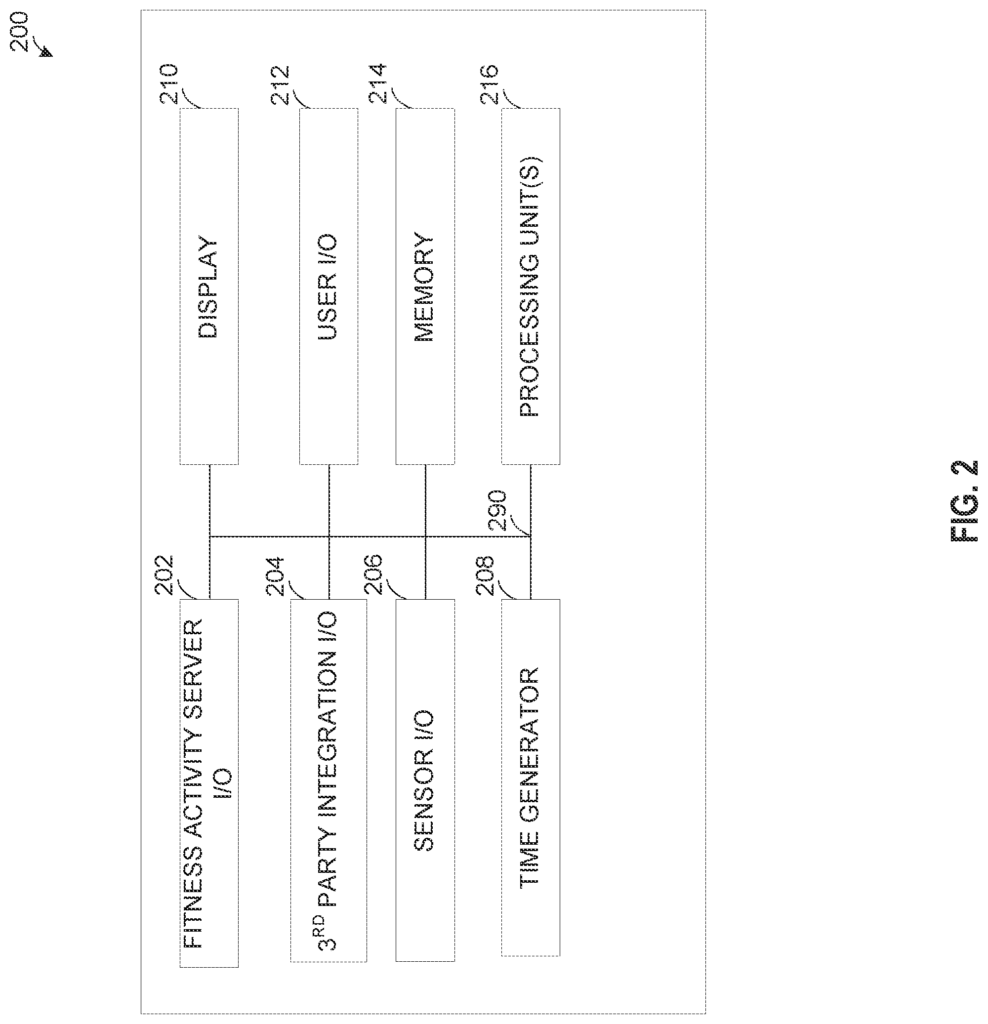
In one aspect, the system includes a central server and a client device that can be accessed remotely and is configured with software to monitor and modify a user?s fitness routine. The server can receive user information through communications with the software via the client device, and generate the fitness program accordingly. The server can then send specifics about the fitness program to the user (such as an exercise routine, a projected timeline, etc.). The software application can be presented to the user via the client device. The generated fitness program can be more than 99% accurate in helping the user achieve the desired goals within the predicted timeline. Software application on the client device can assist in the user progressing through the fitness program. For example, the software application may provide the user with a scheduled, which includes instructions on how to complete the scheduled exercise, or it could offer real-time coaching based on the user performance (for instance, by recommending changes in technique or motivational messages), or monitor the user performance using inputs from sensors (internal and external) or input/output devices of the mobile phone on which the app runs (for example a camera or microphone, or The software application can cause the client device, during the user?s participation in the program, to send the user?s progress to a server. The server will then modify the program based on the user?s progress. The server can terminate the fitness program once the user reaches the goal within the time frame predicted.
A non-limiting feature of the described features could be the ability to predict with greater than 99% accuracy the time required for a generated program to enable the user to progress between an initial set or physical performance metrics and a desired set. A further benefit is the ability of the system to create a customized fitness program that takes into account the user?s physical capabilities, and their target goals. The fitness program will be personalized according to the user?s physical capabilities as well as physical metrics and provide recommendations and exercises to achieve the target goals by the deadline. This system, unlike other systems, does not require the user to know their end result or to be familiar with kinesiology, exercise physiology or expensive equipment. It also doesn’t require them to enter large amounts of data or to have extensive knowledge. Instead, it uses basic inputs (such as age and weight), and equipment that many users already have. The expert system can tailor a fitness program that is 99 percent effective in helping the user achieve his/her goals based on these initial, basic inputs. This allows users to maximize their workout time and minimize the negative effects of current exercise programs.
FIG. 1 shows an embodiment of a network diagram 100 of a personalized fitness program generation and implementation system, in accordance with an exemplary embodiment. As shown in FIG. 1, multiple users 102 a-102 c may each have a mobile device 120 a-120 c configured to connect to a network 104. In some embodiments, the user 102 c may comprise one or more peripheral devices. As shown in FIG. 1, the peripheral devices may comprise a pair of shoes 122 a or glasses 122 b (collectively or individually referred to hereafter as ?the peripheral device 122? or ?the peripheral devices 122?) that comprises one or more sensors configured to measure forces or other user metrics. In some embodiments, the one or more sensors of the peripheral device 122 may be configured to interface and communicate with the mobile device 120 c of the user 102 c. The network 104 may connect the mobile devices 120 a-120 c to a fitness program system 105. The fitness program system 105 may comprise a fitness activity server 106, a force/metric data store 108, an exercise data store 110, and a fitness program data store 112. The arrows shown between the mobile devices 120 a-120 c and the network 104, the network 104 and the fitness program system 105, the fitness activity server 106 and the force/metric data store 108, the fitness activity server 106 and the exercise data store 110, and the fitness activity server 106 and the fitness program data store 112 may represent communications between the various devices and components of the network diagram 100. The communications indicated may be either bidirectional or unidirectional and any communication method may perform the communications indicate, for example IEEE 802.15 compliant (Bluetooth) communications. IEEE 802.11 standard compliant Wi-Fi communications, IEEE 802.3 Ethernet communications, near-field communications, or equivalents thereof. In some embodiments, a bus system may perform the communications. For example, the communications between the fitness activity server 106, the force/metric data store 108, the exercise data store 110, and the fitness program data store 112 may occur via a single bus system when these components are all part of a single or integrated system such as the fitness program system 105.
The mobile devices 120a-120c can be configured to display information or communicate in any other way between the users 102a-102c and the fitness system 105 through the network 104. The mobile devices 120a-120c can, for example, act as an interface to the fitness program system. In certain embodiments, users 102a-102c can use their mobile devices to view or input information into the fitness system 105. Mobile devices 120 a – 120 c can provide the fitness system 105 with initial force metrics, other physical metrics, or account information about the respective users 102 a – 102 c. Additionally. The mobile devices 120a-120c can be configured, alternatively or additionally, to monitor the user’s progress in the fitness program generated. In certain embodiments, mobile devices 120a-120c are configured to track progress in real time through scheduled exercises. Or they can show users 102a-102c progress updates or schedule changes pertaining to a generated fitness program. Mobile devices 120 a -120 c can track non-scheduled exercises, like number of steps or impromptu runs. The tracking can be done using one or more sensors that are integrated into the mobile device, such as an accelerometer or camera. In some implementations the tracking may be based upon sensor data that is received by the mobile phone from an external sensor during data communication.
In some embodiments, mobile devices 120 a to 120 c can be a cell phone, multimedia device, watch, PDA or other portable electronic device that is capable of wireless or wired communication with other electronic devices. In some embodiments the mobile device 120 a – 120 c can be a device capable of running a software program (app), wherein the program may be configured for one or multiple users to interact directly with one or both of the mobile device 120 a – 120 c and the peripheral device. Users 102 a – 102 c may be able to interact remotely with the fitness program by connecting the mobile devices to the network. In certain embodiments, mobile devices can be configured to save data to later transmit via the network. For example, when mobile devices are not able to communicate wirelessly or wiredly with the network without additional hardware.
In some embodiments, a user 102 c can use the peripheral electronic device, which is configured to interface with or couple the mobile device 120c, the network, or an external device (not shown). As shown in FIG. The peripheral electronic device may include one or more sensors configured to count footsteps, measure force exerted, measure distance traversed in a step, measure height or distance jumped, or measure or count any other physical or force metric obtained via any body or other physical or electrical sensors (for example, a heart rate, oxygen levels in blood, etc.). The peripheral electronic device may include one of more sensors that are configured to measure the force exerted by a user, measure the distance traversed during a step, determine height or distance jumped or to measure any other force or physical metric derived from any physical or electrical sensor (such as a heartbeat, oxygen levels within blood). The peripheral electronic device may be configured, once the counting is completed (or the measuring is being continuously updated), to communicate the measured or counted information to the mobile 120 c using the interface described above. In operation, for example, the peripheral device 122 can be configured to communicate with the user by counting the number of steps that the user has taken and then communicating the counted to the mobile device or destination on the network. In certain embodiments, information captured by peripheral electronic device 120 may be used for updating or modifying an existing fitness program. External sensors can be coupled to the fitness system. External sensors can provide additional metrics and related information to the fitness system about the user?s performance on one or several exercises in the personalized fitness program of the user or the performance of other exercises or activities that are not part of the fitness programme. The peripheral electronic device 120 may, in some embodiments be configured to integrate the app running on the mobile devices. In FIG. 1, the peripheral device 122 is shown as a pair glasses. However, it may also include sensors embedded in a shoe, a pedometer attached to an article of clothing, or on another part of the person’s body. It may also include a sensor within a bracelet or wristwatch, or other electronic devices that can be used to identify or measure physical movement.
The network 104 can be the Internet, local intranets, local network connections isolated from external access or any other type of network structure. The mobile devices 120a-120c can be configured, as described above to communicate via the network 104 using any known communication method. In certain embodiments, network 104 allows the devices 120a-120c to communicate. In certain embodiments, the fitness activity server may be configured so that the network 104 allows the devices 120a-120c to communicate. The network 104 can include wired or wireless communication mediums, depending on implementation.
As discussed above, a fitness program system may be configured to communicate with and receive information from mobile devices 120 a -120 c over the network 104. Fitness activity server 106, for example, may receive information about the user or mobile device 120a-120c. This information may include force metrics or data related to scheduled exercise, desired target metrics and a request to create a new fitness program.
For instance, the fitness program 105 could receive via the network 104 the personal identifier of the mobile device 120b. The fitness system 105 can use the personal identifier received from the mobile device to access the account of the user 102 in the fitness data store 112. This may include an existing program. In some embodiments the fitness system 105 can also receive feedback from the user, such as a confirmation of the completion of an assigned exercise or other similar feedback, and update the fitness program for the associated user, the mobile device, and the user 102. For example, it may update a prediction for the expected completion date using the information received, or generate one or more new workout regimens. In some embodiments the fitness system 105 can receive a revised performance target metric, and be configured to update or change the user’s program in accordance with the revised performance target metric. The fitness system 105 can be configured to send a response to the mobile device 120b, which indicates the new or current expected completion date for the fitness programme and the revised exercise program for the fitness programme, if applicable.
The fitness program system 105 can be configured to create, modify, track or delete a fitness program for a user based on their current physical abilities (measured by initial or current metrics) and desired physical abilities (measured by desired performance metrics). The fitness program system 105 can use the data in the force/metric store 108, and the exercise data in the exercise data storage 110, to create or modify a user’s fitness plan. This program may then be stored at the fitness store 112. The fitness program system may, for example, generate the user?s fitness program at least partially based on the user?s desired or initial physical metrics. The fitness program system 105, for example, may choose the first exercises in the user’s personal fitness program according to the user’s physical abilities and select subsequent scheduled exercise that will help him reach his desired target metrics.
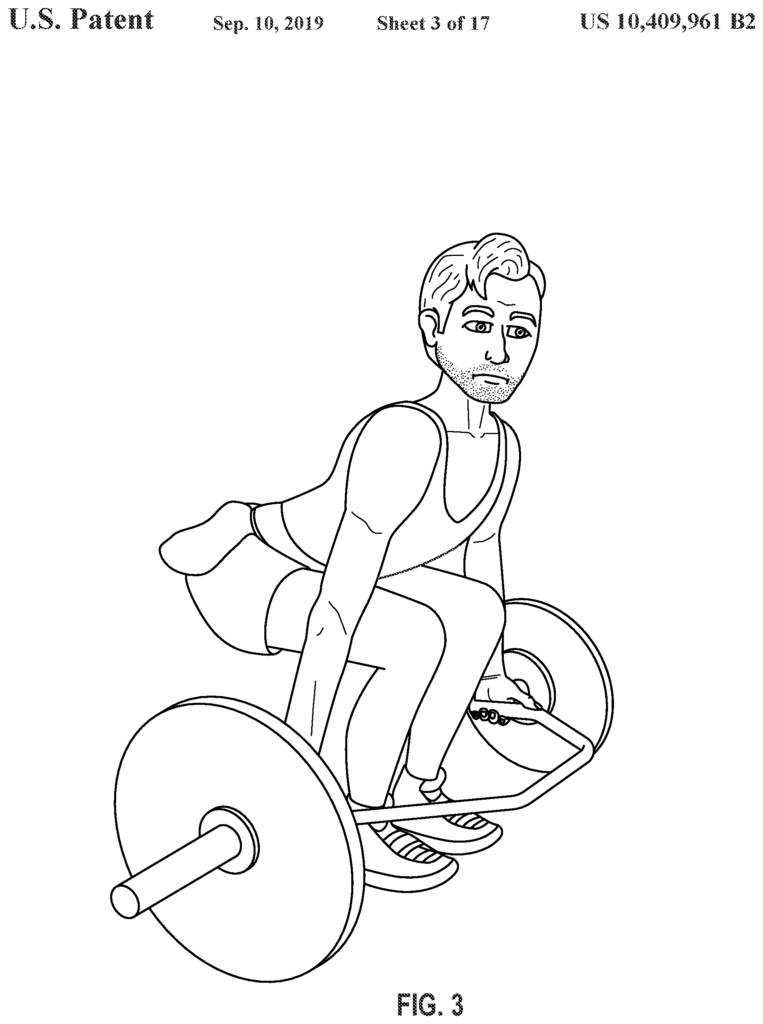
In some embodiments, fitness program system may modify generated programs based on inputs and metrics from the user. The fitness program system may, for example, determine if the user performs the generated fitness programme according to the schedule, or if the user is ahead or behind schedule, based upon the inputs and metrics. The fitness program system may update the fitness schedule or exercises based on inputs and metrics from the sensors in the peripheral electronics. When the peripheral electronics 122 detects that the user has performed a run the metrics associated with the run may be sent to the fitness system 105. The fitness system 105 can then automatically update the user?s fitness program. If the user finishes a run that was scheduled, the fitness system 105 can automatically remove the run from their fitness program. The fitness program system may adjust the user?s fitness program if the user completes a run that was not scheduled. This adjustment could include deleting scheduled activities or exercises from the fitness program of the user. Exercises or activities that are not scheduled can reduce the time it takes to reach the target metrics.
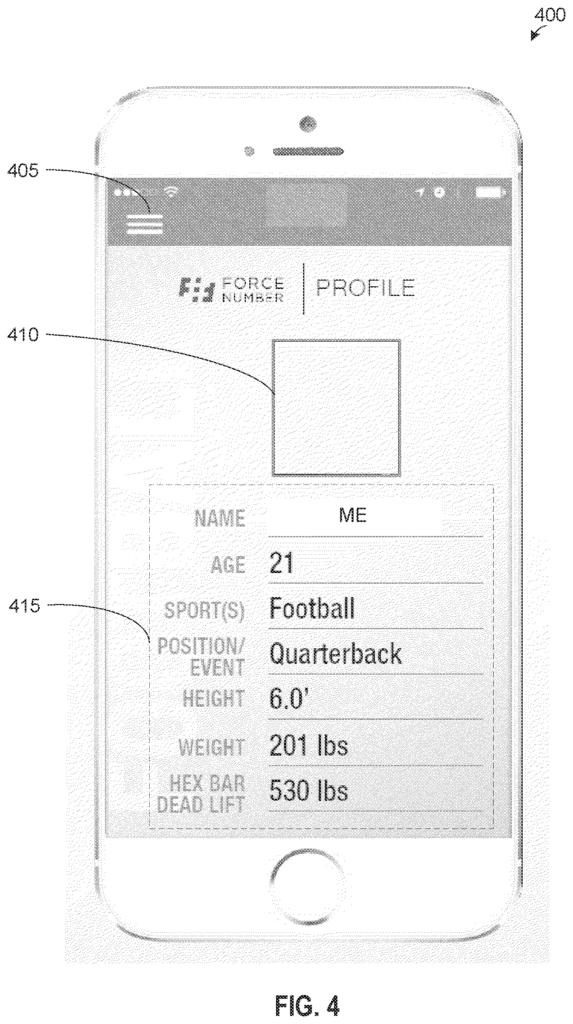
Click here to view the patent on Google Patents.
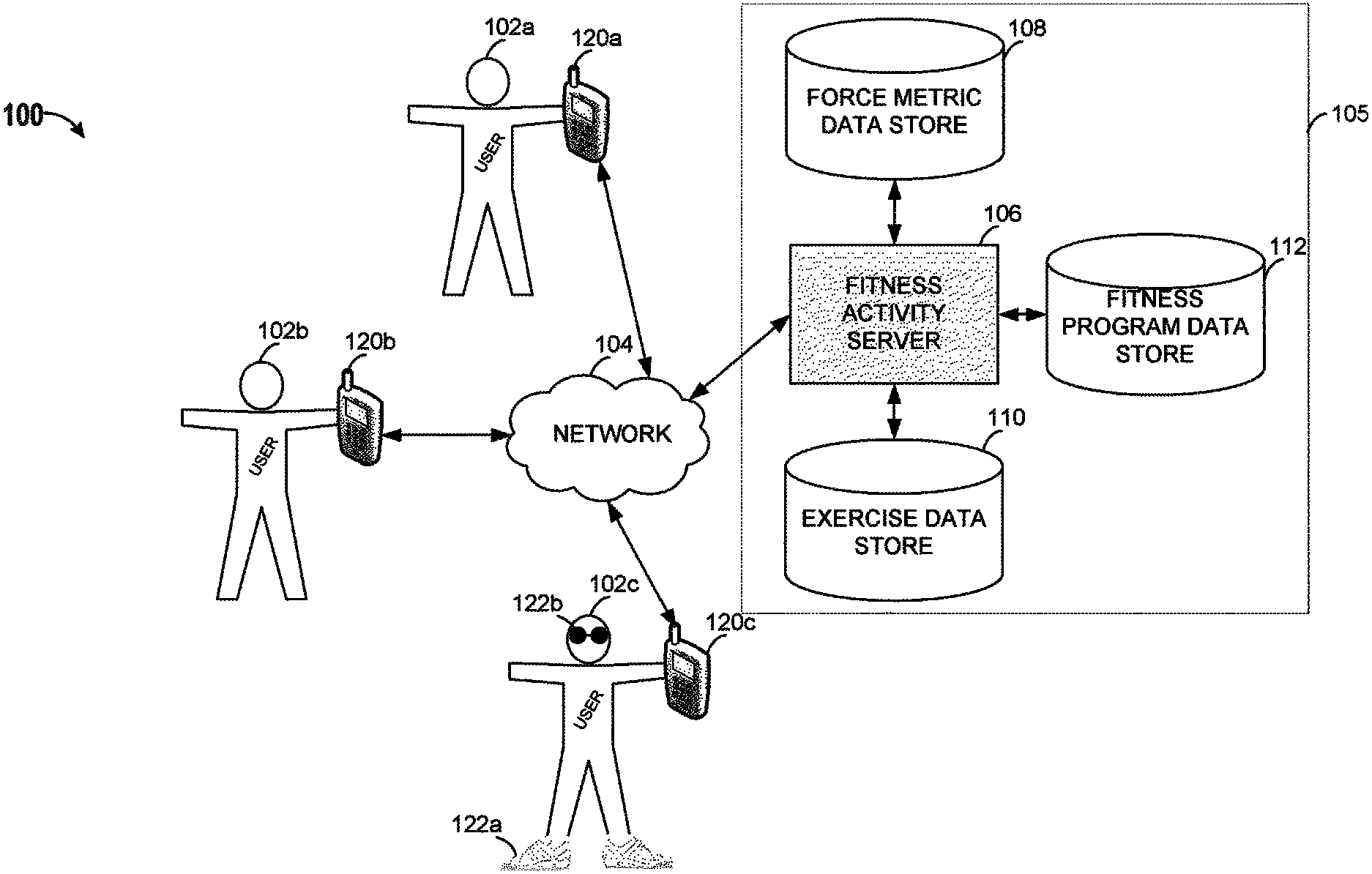
Leave a Reply